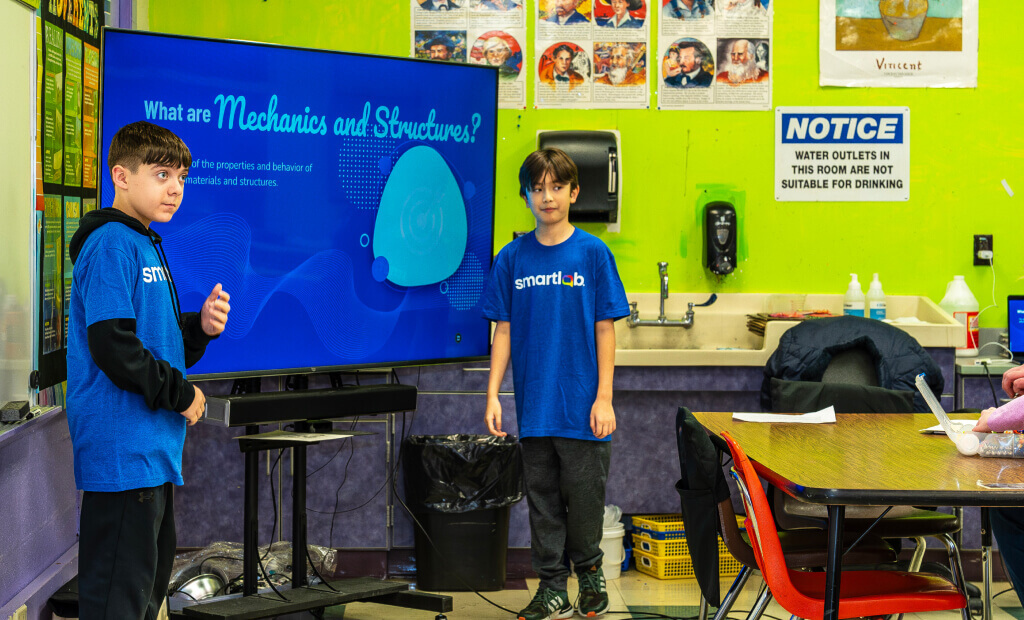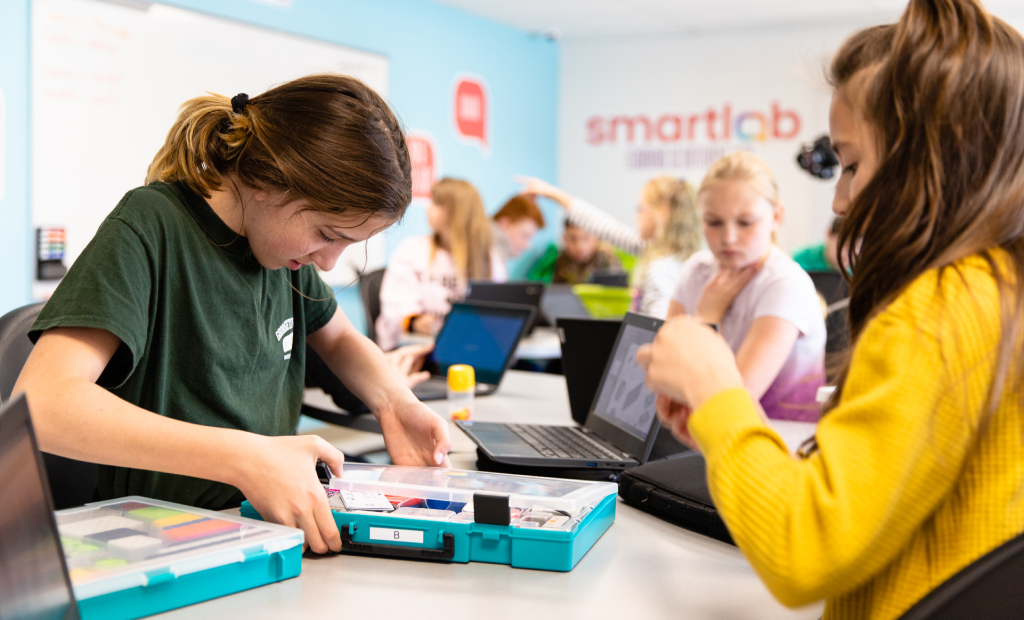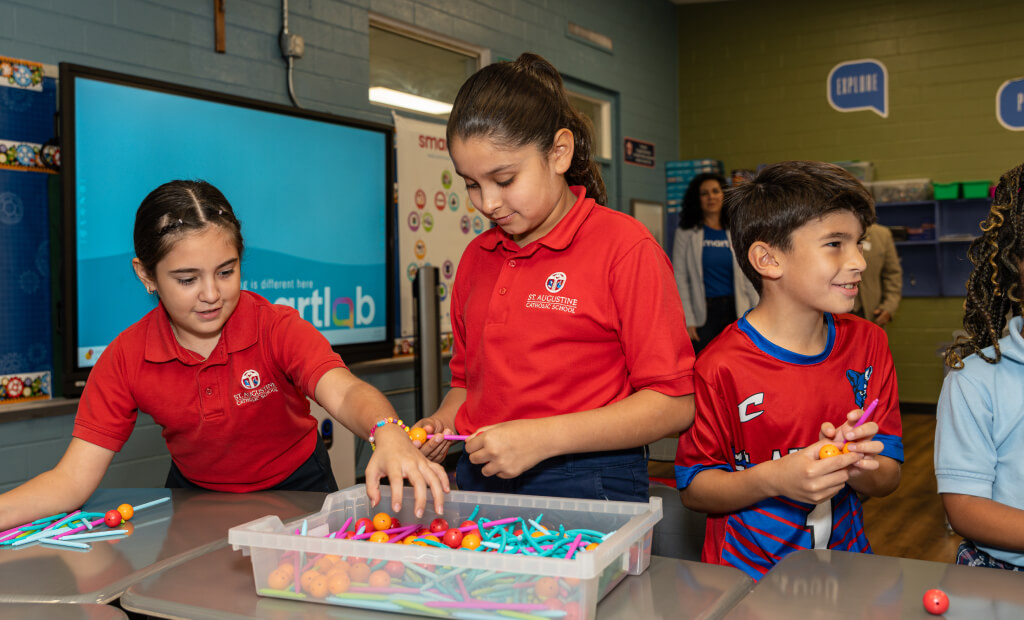STEM Literacy 101: What It Is and Why Every Student Needs It
From the way we communicate to the careers we pursue, STEM—science, technology, engineering, and math—shapes nearly every part of our everyday lives. As technology continues to evolve at lightning speed, the demand for professionals who can think critically, solve complex problems, and adapt to new tools and systems is only growing.
That’s where STEM literacy comes in.
In this blog post, we break down what STEM literacy really means, why it’s essential for preparing students for the future, and how educators, parents, and school leaders can help foster it—both in and outside the classroom.
What Is STEM Literacy?
STEM literacy encompasses much more than being good at science or math. It’s the ability to understand, apply, and engage with ideas across science, technology, engineering, and math, and to use that understanding to solve real-world problems. It’s not just about knowing facts or how to use technology, but being able to think critically, ask good questions, and take action based on what you know.
Let’s take a closer look at each part of STEM and how the disciplines work together:
- Science teaches students how to observe the world, ask questions, and gather evidence. Whether tracking weather patterns or experimenting with plant growth, science helps students build curiosity and make sense of the natural world.
- Technology focuses on the tools and systems we use to solve problems. While computers play a major role, technology goes beyond specific tools—it’s learning how to choose the right tools, understand how they work, and use them responsibly.
- Engineering brings ideas to life. It’s about designing, building, testing, and improving solutions. Engineering challenges help students think creatively, work collaboratively, and embrace the process of trial and error.
- Math gives students the language to measure, model, and analyze. It’s the foundation for spotting patterns, making predictions, and backing up decisions with data.
When students develop skills in all four areas—and see how they connect—they’re better equipped to solve complex, real-world problems. For example, someone building a basic mobile app might draw upon math to create the logic, technology to code it, engineering to design the user experience, and science to understand the problem it’s solving. Or take climate change: students need science to understand the causes, math to interpret the data, technology to visualize trends, and engineering to create sustainable solutions.
In short, STEM literacy empowers students to understand the world around them and shape its future.
Why Is STEM Literacy Important?
STEM literacy isn’t just for future scientists or engineers—it’s for every student. Today, technology touches nearly every part of life and work. From coding software to analyzing data, managing automated systems, or simply navigating a new interface, they’ll need a strong foundation in STEM to keep up and stand out.
As automation and artificial intelligence continue to reshape the workforce, STEM skills are becoming essential across a wide range of careers—not just in tech, but in healthcare, finance, manufacturing, education, and even the arts. According to the U.S. Bureau of Labor Statistics, STEM occupations are projected to grow nearly twice as fast as non-STEM jobs through 2033. What’s more, these roles tend to come with higher-than-average salaries and long-term career stability.
But STEM literacy is about more than landing a good job. It builds the kind of thinking that helps students thrive in any environment, including:
- Critical thinking: Analyzing a situation, weighing evidence, and making informed decisions.
- Creativity: Finding innovative solutions to complex problems—and not being afraid to experiment.
- Problem-solving: Breaking challenges down into manageable steps and persevering through setbacks.
When students learn how to think like scientists, engineers, and innovators, they build confidence in their ability to tackle the unknown. And that mindset will serve them well, no matter what path they choose.

4 Benefits of STEM Literacy
STEM literacy equips young learners with skills that extend far beyond the classroom—skills they’ll rely on to thrive far into the future. Here are just a few of the long-term benefits:
1. Innovation and Adaptability
STEM-literate students learn how to think on their feet. They’re comfortable asking questions, testing ideas, and pivoting when something doesn’t work. These are the kinds of skills that help young people adapt to change, whether it’s new technology in the workplace or unexpected challenges in daily life. STEM education creates flexible thinkers who see change not as a threat, but as an opportunity to create something better.
2. Teamwork and Collaboration
STEM learning often happens in teams, and that’s by design. Whether students are coding a robot or designing a sustainable energy solution, they need to communicate, delegate, and work together. These collaborative projects build essential soft skills like empathy, active listening, conflict resolution, and problem-solving. In short, students learn how to be both leaders and teammates.
3. Real-World Problem Solving
One of the most engaging aspects of STEM literacy is its direct connection to global issues. Students who can interpret data, design solutions, and think critically are better prepared to address complex challenges such as climate change, public health, food insecurity, and equitable access to technology. They don’t just learn about problems; they’re empowered to be part of the solution.
4. Confidence Through Hands-On Learning
STEM literacy thrives in active, project-based environments where students can engage with their learning, not just memorize. That hands-on experience builds confidence. Students see their ideas come alive, learn from their mistakes, and try again. This sense of ownership over their learning helps them believe in their potential and carry that belief into other areas of life.
How to Foster STEM Literacy in Students
Many teachers, especially those without a STEM background, feel unprepared to tackle these subjects with their students. But fostering STEM literacy doesn’t require high-tech tools or a degree in engineering! It starts with curiosity, creativity, and a little guidance.
Whether you’re a teacher, parent, after-school facilitator, or school leader, there are plenty of simple, effective ways to make STEM learning part of a student’s everyday experience.
Make STEM hands-on and fun
Engagement is key. Give students opportunities to build, explore, and experiment. In the classroom, that might look like creating a basic circuit, coding a simple game, or testing bridge designs with craft sticks. At home, it could be as simple as cooking with ratios or building a DIY weather station. The more interactive the activity, the more likely students are to retain what they learn and enjoy it!
Use what’s already available
You don’t need to start from scratch. Tap into existing STEM kits, free online platforms, and community-based programs. Websites like Code.org, NASA for Students, or Scratch from MIT offer engaging activities for all grade levels. Local libraries, museums, and after-school programs often run STEM workshops that make learning more accessible and fun.
Embrace interdisciplinary learning
STEM doesn’t have to exist in a silo. Combining STEM with the arts—often called STEAM—can deepen student engagement and understanding. Lead students in designing logos for their engineering projects, animating scientific concepts, or writing stories about the future of technology. These creative extensions make STEM more relatable and help students see connections across disciplines.
Focus on growth, not perfection
One of the biggest barriers to STEM success is the belief that you must be a “math person” or “science person.” Helping students develop a growth mindset—where mistakes are seen as part of the process—can change that perception. Celebrate experimentation, persistence, and progress. When students see STEM as something they can learn, rather than something they’re either good at or not, they’re more likely to stick with it, while feeling comfortable claiming a “STEM identity.”
Above all, fostering STEM literacy is about nurturing confidence and curiosity. With the right mindset and a few simple tools, every student can become a capable, creative problem solver, ready to tackle any project.
Tools and Resources for STEM Literacy
Bringing STEM literacy to life is easier when you have the right tools—and there’s no shortage of innovative programs designed to help. If you’re building a classroom lab or makerspace, launching a new STEM initiative, or looking for ways to supplement learning at home, here are some trusted resources to get started:
- SmartLab: Our fully integrated, project-based STEM learning environments give students hands-on experience with real-world tools, fostering collaboration, critical thinking, and creativity from day one (complete with comprehensive facilitator training and support!).
- littleBits: These modular electronics kits make it easy for students to invent and prototype with circuits, sensors, and more—no soldering or wiring required.
- Tinkercad: A free, web-based app that introduces students to 3D design, electronics, and coding in an intuitive, drag-and-drop interface.
- Raspberry Pi: Affordable, credit-card-sized computers that are perfect for teaching programming and hardware tinkering.
- Code.org: A nonprofit offering free, high-quality coding curriculum for all grade levels, including Hour of Code activities and courses aligned to standards.
- Pi-top: A hands-on, DIY laptop building kit that helps students learn the fundamentals of computer hardware and software.
- Science Buddies: Offers a vast library of hands-on science projects, lesson plans, and STEM activities for educators and families.
These resources make it easier to integrate STEM into daily instruction, support differentiated learning, and build student confidence through exploration and creativity. For more resources and tools, check out our full blog post on STEM Education Companies & Organizations.
Of course, access to funding is key to bringing many of these tools into your school or district. Check out our guide Funding STEM for the Long Term, a free resource designed to help you identify and apply for the grants and funding streams that support STEM initiatives.
Download the guide now to get started and make STEM literacy accessible for every learner.
Frequently Asked Questions
What is STEM literacy?
STEM literacy is the ability to understand and apply concepts in science, technology, engineering, and math. It’s essential because it equips students with critical thinking, problem-solving, and digital skills needed to succeed in a rapidly evolving, technology-driven future.
How can I teach STEM literacy at home?
You can foster STEM literacy at home through hands-on projects such as building simple machines, coding games with free platforms like Scratch, or using STEM kits. Even everyday activities like cooking, measuring their height, simple home repairs, or gardening can also help children apply math and science concepts in real life.
What careers require STEM literacy?
STEM literacy is foundational for careers in engineering, data science, healthcare, environmental science, robotics, and software development. It’s also increasingly important in non-traditional fields such as finance, marketing, and education.
Are there free STEM resources for teachers and parents?
Yes! Websites like Code.org, NASA for Students, and Science Buddies offer free activities, lesson plans, and project ideas that any adult can participate in with young learners. Many organizations also provide downloadable STEM curricula and interactive platforms for K–12 learners.



